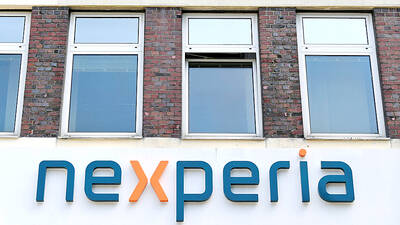The nation's consumer price index (CPI) rose 3.08 percent year-on-year last month on rising food, clothing and fuel prices, the government's statistics bureau said yesterday.
The inflation benchmark accelerated to a two-year high last month, adding pressure for another interest-rate increase.
Last month's figure was up a seasonally adjusted 0.78 percent month-on-month, the Directorate General of Budget, Accounting and Statistics (DGBAS) said.
Growth in last month's CPI compares with August's revised 1.6 percent year-on-year increase and seasonally adjusted 0.31 percent month-on-month rise.
high
"The inflation figure is quite high, surely putting pressure on the central bank to raise interest rates further," said Tony Phoo (符銘財), an economist at Standard Chartered Bank in Taipei.
"We expect the central bank to raise rates by another 12.5 basis points in December," he said.
On Sept. 20, the central bank raised its benchmark rates for a 13th consecutive quarter to 3.25 percent.
Food prices, which account for a quarter of the consumer price index, climbed 7.72 percent. Transportation costs increased 0.71 percent and housing costs, including gas and rent, rose 1 percent. The price of clothes jumped 3.5 percent.
raw materials
"Retailers raised food prices because they had to pay higher prices for raw materials and energy," Rita Hsueh (
"Pastries, eggs, milk, puddings, boxed lunches and almost every daily consumer good have become more expensive lately," she said.
The core price index, which excludes prices of fresh vegetables and fruits, fishery products and energy, was up 1.94 percent last month from a year earlier and up 0.3 percent from August.
The wholesale price index (WPI) last month rose 4.63 percent year-on-year, which was up a seasonally adjusted 0.48 percent month-on-month, the DGBAS said.
In the nine months to September, the CPI rose 0.9 percent, the core price index gained 1 percent and the WPI was up 6.08 percent from a year earlier.

Jensen Huang (黃仁勳), founder and CEO of US-based artificial intelligence chip designer Nvidia Corp and Taiwan Semiconductor Manufacturing Co (TSMC, 台積電) on Friday celebrated the first Nvidia Blackwell wafer produced on US soil. Huang visited TSMC’s advanced wafer fab in the US state of Arizona and joined the Taiwanese chipmaker’s executives to witness the efforts to “build the infrastructure that powers the world’s AI factories, right here in America,” Nvidia said in a statement. At the event, Huang joined Y.L. Wang (王英郎), vice president of operations at TSMC, in signing their names on the Blackwell wafer to

AI BOOST: Although Taiwan’s reliance on Chinese rare earth elements is limited, it could face indirect impacts from supply issues and price volatility, an economist said DBS Bank Ltd (星展銀行) has sharply raised its forecast for Taiwan’s economic growth this year to 5.6 percent, citing stronger-than-expected exports and investment linked to artificial intelligence (AI), as it said that the current momentum could peak soon. The acceleration of the global AI race has fueled a surge in Taiwan’s AI-related capital spending and exports of information and communications technology (ICT) products, which have been key drivers of growth this year. “We have revised our GDP forecast for Taiwan upward to 5.6 percent from 4 percent, an upgrade that mainly reflects stronger-than-expected AI-related exports and investment in the third

RARE EARTHS: The call between the US Treasury Secretary and his Chinese counterpart came as Washington sought to rally G7 partners in response to China’s export controls China and the US on Saturday agreed to conduct another round of trade negotiations in the coming week, as the world’s two biggest economies seek to avoid another damaging tit-for-tat tariff battle. Beijing last week announced sweeping controls on the critical rare earths industry, prompting US President Donald Trump to threaten 100 percent tariffs on imports from China in retaliation. Trump had also threatened to cancel his expected meeting with Chinese President Xi Jinping (習近平) in South Korea later this month on the sidelines of the APEC summit. In the latest indication of efforts to resolve their dispute, Chinese state media reported that

CHINESE EXPORT CURBS: A dispute between China and the Netherlands could halt chip supply, affecting vehicle production, US and European auto associations said Groups representing major automakers late on Thursday warned that a chip disruption stemming from a dispute between China and the Dutch government could quickly affect US auto production. Automakers and their suppliers received notice from chipmaker Nexperia (安世半導體) last week that it could no longer guarantee delivery of its chips, the European Automobile Manufacturers Association said, adding that manufacturing could be significantly disrupted. In the US, the Alliance for Automotive Innovation, which represents General Motors, Toyota, Ford, Volkswagen, Hyundai and nearly all other major automakers, urged a quick resolution. “If the shipment of automotive chips doesn’t resume — quickly — it’s going to